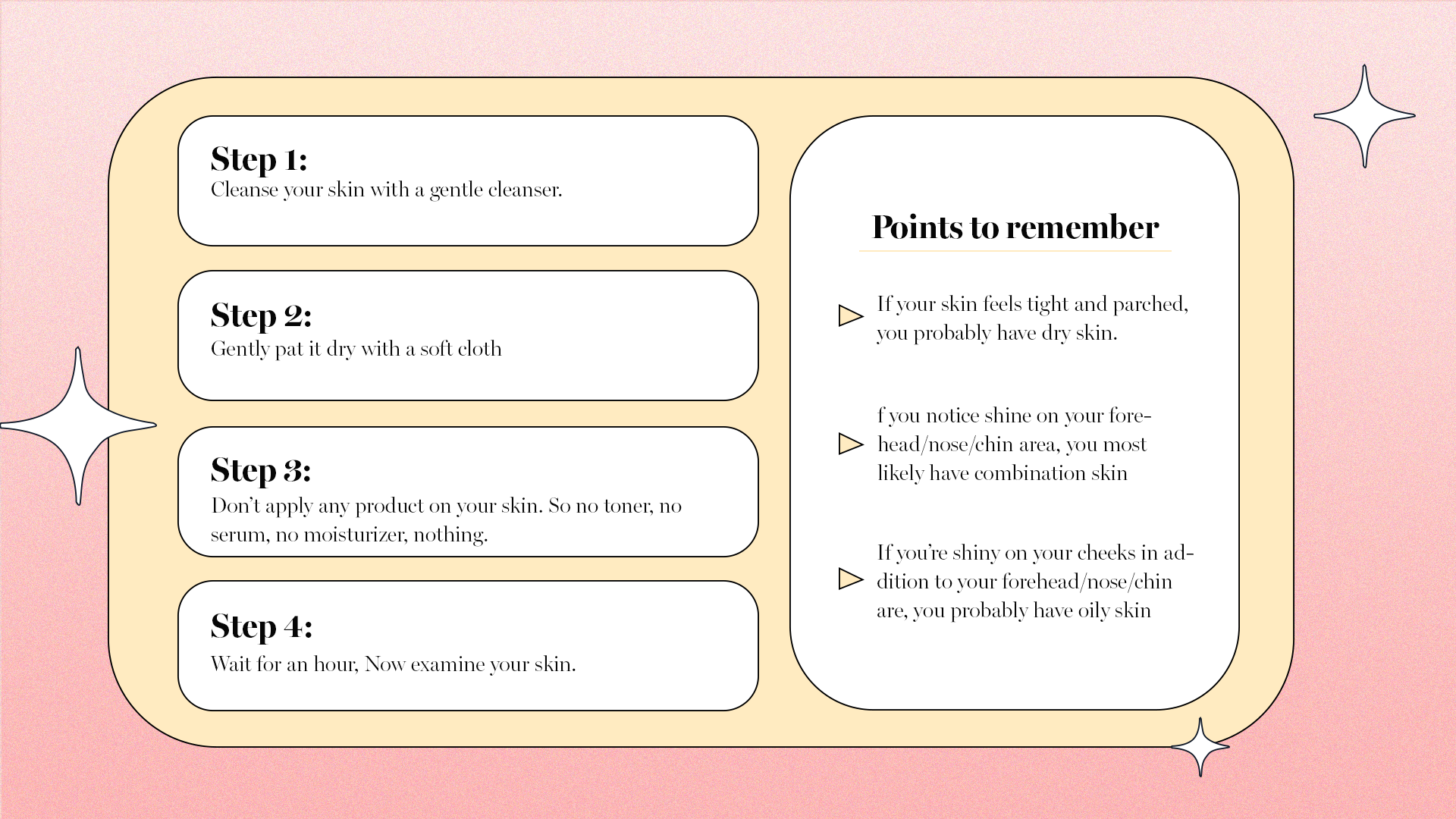The first and most important step in your skincare routine is determining what skin type you have. Once you know your skin type, you can outline a routine that works best for you. This way, you can be sure that you choose products that balance your skin and make it look healthy and radiant. Today, we'll help you learn your skin type so you can find the right skincare match.
What skin types are there?
An oily skin produces more sebum than is really necessary. Due to this extra oil, your skin may look shiny or even a bit greasy and is usually accompanied by blackheads and large pores. This can manifest as clogged pores, such as pimples.
A dry skin is the opposite of oily skin and does not contain enough oil. The skin may look dull or feel tight, and severe dryness can cause the skin to crack, flake, or peel. Dry skin and dehydrated skin are sometimes used interchangeably, but they are not the same thing. Dehydration is a lack of water and can happen to anyone, regardless of skin type.
A combination skin is both dry and oily in some places. Commonly with combination skin is an oily T-zone (forehead, nose, and chin) and dry cheeks.
A sensitive skin may manifest as a discomfort in response to external factors such as seasonal changes or harsh products. You may experience irritations such as a burning or tightening sensation.
Every skin type is ‘normal’ for us, however, we refer to normal skin as skin that is well-balanced and shows no persistent skin issues.
Can your skin type change?
As you get older, your skin type can change. Your skin tends to become drier as you age, so you might notice oilier skin as a teenager and drier skin as you mature. Seasonal changes or a colder or warmer climate can also affect whether your skin feels oilier or drier.
How do you determine your skin type?
1. Bare face method
Your skin type is more of a spectrum than a group: everyone's skin falls somewhere on the spectrum. You can be on the drier side of dry skin or on the oilier side of oily skin. A simple way to determine your skin type:
- Cleanse your skin with a gentle cleanser.
- Do not apply any product to your skin.
- Wait an hour.
- Now examine your skin.
- Does your skin feel tight and parched? Then you probably have dry skin.
- Do you notice a shiny forehead, nose, or chin? Then you probably have combination skin.
- Do you have shiny cheeks and a T-zone? Then you probably have oily skin.
- If none of these categories apply, then you have normal skin.
2. The blotting paper method
Another simple way to determine your skin type at home is by pressing a clean blotting paper against various parts of your face. Then hold the paper up to the light to see how much oil is absorbed: the more oil on the paper, the oilier your skin is likely to be. If you see little to no oil, you may have dry skin. Finally, if the blotting paper shows minimal oil from only your T-zone, you probably have a combination or normal skin type. For best results, we recommend doing this test around the middle of the day or in the evening—blotting your skin too soon after cleansing can skew the results.
Next step: find your match
The main step is taken: you know your skin type. Now you can specifically search for a skincare routine that fits your skin and your specific needs based on your skin type.







 Trending
Trending
 LW Blog
LW Blog










